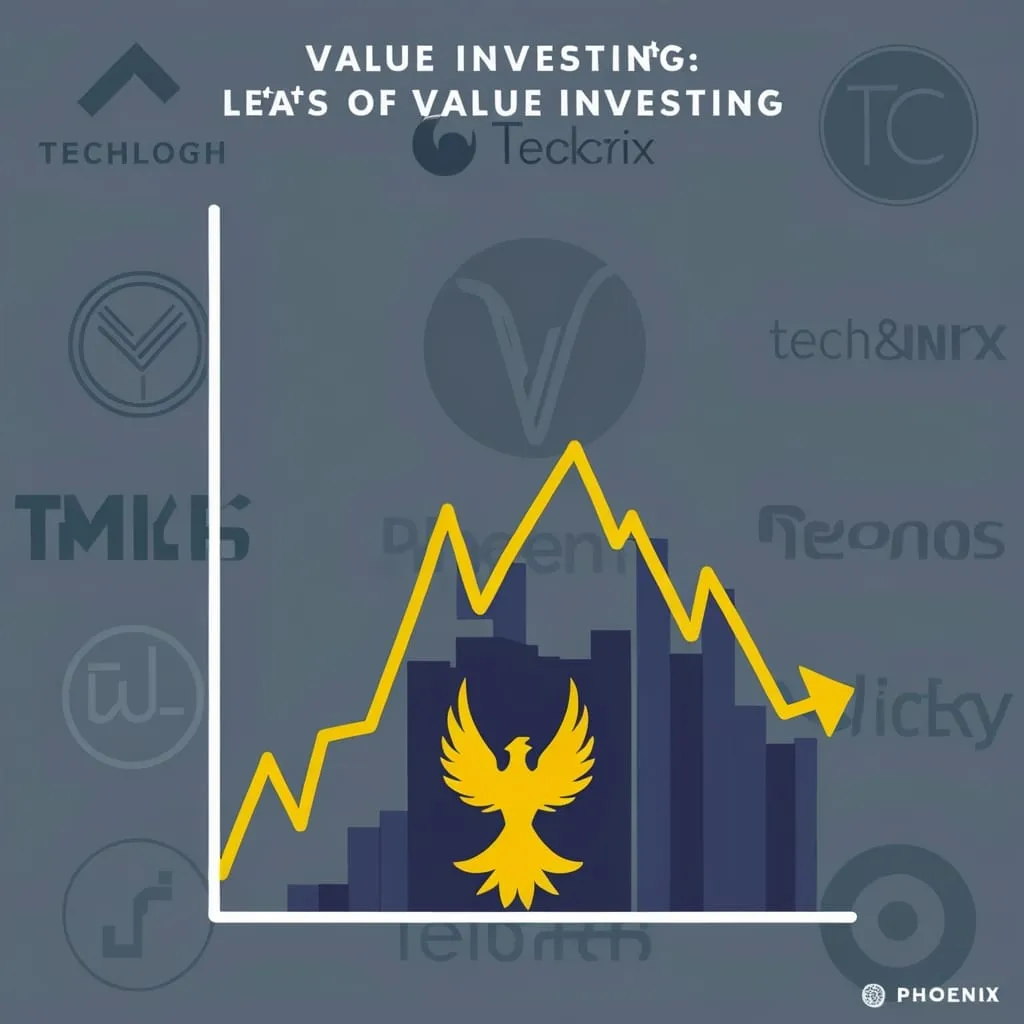In the tumultuous world of finance, where market fluctuations can be as unpredictable as the weather, value investing stands out as a beacon of stability and wisdom. This approach, honed by legends like Benjamin Graham and Warren Buffett, is built on a set of timeless principles that can guide investors through even the most turbulent markets. Here, we delve into six core value investing principles that can help you steer your financial ship safely through stormy seas.
The Heart of Value Investing: Intrinsic Value
At the core of value investing lies the concept of intrinsic value. This is not just a number on a financial statement, but a deep understanding of what a company is truly worth, beyond the whims of market sentiment. To determine intrinsic value, you need to dig into the financial statements, analyzing everything from revenue and earnings to debt and cash flow. It’s about seeing beyond the surface level and understanding the underlying health and potential of the business.
Imagine you’re buying a house. You wouldn’t just look at the asking price; you’d inspect the foundation, the condition of the roof, and the neighborhood. Similarly, when evaluating a stock, you need to assess its intrinsic value by considering all the fundamental factors that drive its worth. This approach helps you avoid overpaying for stocks and reduces your exposure to market volatility.
The Safety Net: Margin of Safety
One of the most critical principles of value investing is maintaining a margin of safety. This concept, popularized by Benjamin Graham, is about buying stocks at a price significantly lower than their intrinsic value. It’s like buying a $100 bill for $80; you’re getting a discount that protects you from potential losses.
Think of it like building a bridge. You don’t design it to just hold the weight of the cars that will cross it; you build it to withstand much more than that. In investing, this margin of safety acts as your insurance policy, ensuring that even if things don’t go as planned, you have a cushion to fall back on. For high-quality stocks, you might aim to pay 90 cents for a dollar, while for more speculative ones, you might look for an even deeper discount.
The Virtue of Patience and Discipline
Value investing is not a sprint; it’s a marathon. It requires patience and discipline, qualities that are often in short supply in today’s fast-paced world. When markets are turbulent, it’s easy to get caught up in the emotional rollercoaster of fear and greed. But value investors know that the best opportunities often arise during times of panic.
Warren Buffett’s famous advice to “be fearful when others are greedy and greedy when others are fearful” encapsulates this principle perfectly. When everyone else is selling, you should be looking to buy. And when everyone else is buying, you should be cautious. This contrarian approach demands a level of emotional stability and long-term focus that is rare but highly rewarding.
The Power of Diversification
Diversification is another cornerstone of value investing. It’s the old adage of not putting all your eggs in one basket. By spreading your investments across different sectors, countries, and asset classes, you minimize risk and maximize potential returns. This doesn’t mean scattering your investments randomly; it means creating a balanced portfolio that can weather various market conditions.
Imagine a garden with a variety of plants. If one type of plant is struggling due to weather conditions, others might thrive, ensuring the garden remains healthy overall. Similarly, a diversified portfolio ensures that if one sector is experiencing a downturn, others can compensate, keeping your overall investment healthy.
Finding Opportunity in Volatility
Market volatility is often seen as a nemesis, but for value investors, it’s an opportunity. When markets are turbulent, prices can become detached from intrinsic values, creating buying opportunities. It’s like a sale at your favorite store; you wouldn’t complain about lower prices, would you?
During market downturns, quality companies often get undervalued, providing a chance to buy them at a discount. This is where your patience and discipline come into play. You need to stay calm, avoid emotional reactions, and focus on the long-term potential of these companies. Remember, short-term pain can lead to long-term gain.
The Importance of Continuous Learning and Adaptation
Value investing is not a static strategy; it’s a dynamic process that requires continuous learning and adaptation. Markets evolve, industries change, and new technologies emerge. To stay ahead, you need to be a lifelong learner, always refining your analytical skills and staying informed about market trends and economic conditions.
Think of it like being a chef in a busy kitchen. You can’t just follow a recipe blindly; you need to taste, adjust, and innovate based on the ingredients and the palate of your customers. In investing, this means staying updated on company developments, industry trends, and economic shifts. It also means being willing to adapt your strategies as conditions change, while remaining true to the core principles of value investing.
Practical Applications
So, how do you put these principles into practice? Start by developing a systematic approach to stock analysis. This involves creating a checklist of criteria to evaluate each potential investment, from financial health to management quality. Set price targets for buying and selling, based on your intrinsic value calculations and margin of safety.
Build a watchlist of quality companies that you believe are undervalued. Regularly review and rebalance your portfolio to ensure it remains aligned with your investment goals. This might involve selling some stocks that have reached their intrinsic value and buying others that have fallen below theirs.
Analyzing Financial Statements
When analyzing financial statements, look beyond the surface numbers. Check for hidden assets, such as investments in other companies or undervalued real estate. Analyze the company’s cash flow, debt levels, and earnings growth. This detailed analysis will help you determine the intrinsic value of the company and make informed investment decisions.
Setting Price Targets
Setting price targets is crucial in value investing. It helps you avoid overpaying for stocks and ensures you buy at a price that provides a margin of safety. For example, if you determine that a stock’s intrinsic value is $100, you might set a target price of $80 to buy. This way, you’re getting a discount that protects your investment.
Building a Diversified Portfolio
Building a diversified portfolio is about creating a balanced mix of investments that can withstand various market conditions. This might involve investing in different sectors, such as technology, healthcare, and consumer goods. It could also mean investing in different countries or asset classes, like bonds or real estate.
By spreading your investments widely, you minimize the risk of any one investment significantly impacting your overall portfolio. This approach ensures that your investments remain resilient even in turbulent markets.
In conclusion, value investing is a strategy that thrives in turbulent markets by focusing on intrinsic value, maintaining a margin of safety, practicing patience and discipline, diversifying wisely, finding opportunity in volatility, and continuously learning and adapting. These principles, when applied diligently, can help you navigate the complexities of the financial world with confidence and wisdom. So, the next time the markets get bumpy, remember that turbulence can be your friend, if you know how to harness it.






